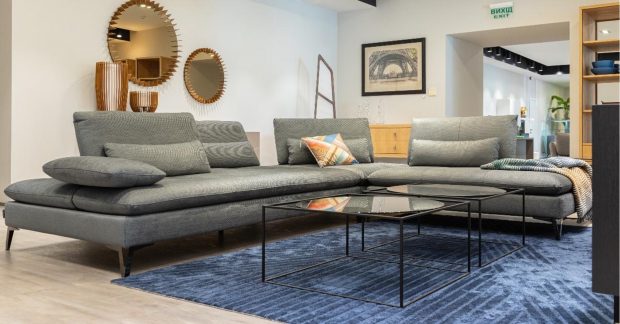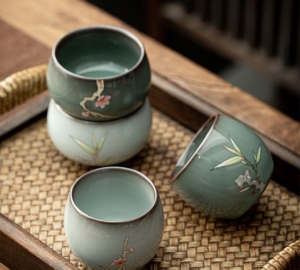The living room is a great place for family and friends to bond. But sometimes, fun gets disrupted when a family member gets allergy attacks. The good news is that allergies can be prevented when you keep your home clean and you use hypo allergenic materials. Here are some tips to keep your living room allergy-free.

1. Choose the right upholstery furniture
Sofa surfaces can be tricky. While they may look clean on the surface, dust mites may be breeding underneath, causing allergies. To help prevent allergies, choose upholstery materials that do not hold dust, like the vinyl or leather sofa. Getting a premium quality leather sofa can be more costly than other sofa materials, but it’s totally worth it. Not only is it hypoallergenic, but also very durable and elegant. It also matches almost any homestyle you want for your living space.
Other sofa tips:
- Dust may settle on the surface of your leather or vinyl sofa, so be sure to regularly wipe the surface of your leather sofa. Include the sides where crumbs, dirt, and other particles can settle.
- If you choose to have a fabric sofa, instead, you may need to clean your sofa more often. Vacuum it regularly to prevent dust from settling and dust mites from breeding. You may also select hypoallergenic materials like microfiber and cotton.
2. Install a vapor barrier in your crawl space
Another source of allergies in the living room can be the moisture that seeps through the floor. When moisture is present, mold and mildew can grow, causing respiratory problems and allergies. One way to prevent this is by installing a crawl space vapor barrier if your house has a crawl space. This is a heavy-duty plastic sheet that covers the ground in your crawl space to prevent moisture from entering your home. It may be an additional expense, but it will definitely save you from potential health issues in the long run.
3. Pick a sofa with raised leg
Another place where dust loves to settle is on the floor under your sofa. Remember to keep it clean all the time to avoid inhaling them when you are around. To make maintenance more convenient, choose a sofa with raised legs so you can easily reach the surface underneath while cleaning.
4. Select the right accessories
Throw pillows and blankets also accumulate dust. To prevent allergies, choose hypoallergenic fibers like cotton, silk, and linen. You can also cover your throws with fabric or plastic cases.
Pillows not often washed can also carry molds and mildew that trigger allergies. If you are not using allergy-proof cases, be sure to frequently wash your pillows and dry thoroughly to prevent allergy attacks.
5. Be mindful of carpets
Carpets can make your living room warm, cozy, and stylish. However, dust gets trapped on them and gets recycled back into the air, causing allergies. Vacuum your carpets regularly if you are using one at home. Choose one with a HEPA filter that can trap allergy-causing particles.
When possible, avoid using carpets and keep your floor bare. Get rid of decorative rugs you don’t really use. If you really need to have a floor mat, choose rugs that you can easily wash and that have a low pile.
6. Get smart with your window treatment
Other significant culprits that cause allergies in your living room are curtains and drapes. They trap dust and other particles that can trigger allergies. Whenever you can, avoid heavy curtains and drapes. Instead, choose lighter curtains like those made of cotton. These curtains make it easier for you to dust off particles and wash. If possible, you may want to avoid curtains and use blinds, instead, which are better off at preventing allergies.
7. Minimize the clutter
The more items you have in your living room, the more places dust and other particles can stick to. To keep your room allergy-free, get rid of the things you don’t really need and reduce the clutter in your living room. You may want to avoid displaying books and minimize other decorations. You can keep these items in an enclosed cabinet as an alternative.
8. Use dehumidifiers, air purifiers, and fiters
Molds and mildew develop in moist, humid air. To prevent the growth of these allergy-causing fungi, consider using dehumidifiers to keep your air dry. You can also use air purifiers to help get rid of air-borne particles that can trigger allergies. If you have an air conditioner, consider regularly replacing your air filters to keep your air clean.
9. Keep your pets out of your living room
Having pets around the house can cause allergies. Surprisingly, it is not the shedding fur that triggers these symptoms. Instead, they are caused by pet dander, which is composed of very tiny flecks of skin that furry animals like dogs, cats, birds, and rodents shed. To avoid pet allergies, you may want to keep your pets away from your living room or in other areas where you frequently stay.
Allergies can be annoying and can lead to other complications when not addressed properly. We hope the tips above can help keep your living room allergy-free, so you can enjoy relaxing with your family and friends.




